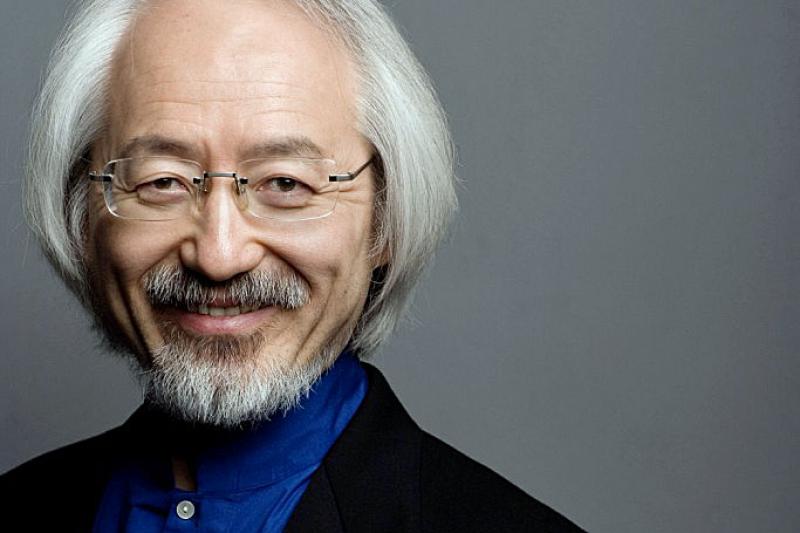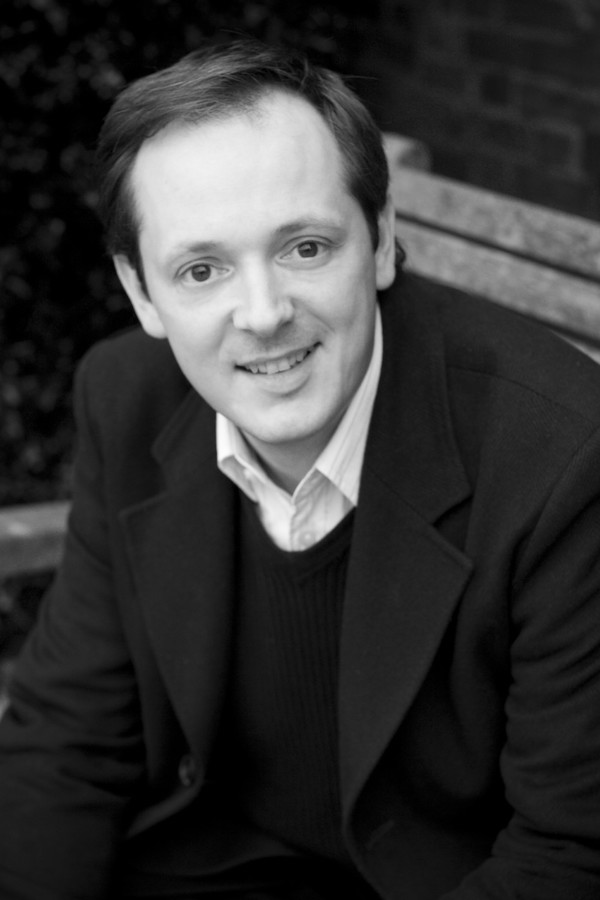Bach B Minor Mass, Bach Collegium Japan, Suzuki, Barbican | reviews, news & interviews
Bach B Minor Mass, Bach Collegium Japan, Suzuki, Barbican
Bach B Minor Mass, Bach Collegium Japan, Suzuki, Barbican
Clarity, colour and detail from Japanese Bach specialists

Masaaki Suzuki’s reputation precedes him. His recordings of Bach’s choral works with Bach Collegium Japan, the group he founded in 1990, have been arguably the finest of recent decades. But visits to the West, and especially to London, are rare, so this evening’s concert offered a valuable opportunity to find out what the dynamics are within the ensemble, and how they achieve such impressive results on disc.
Unlike many Bach interpreters, Suzuki is a real conductor. He doesn’t play violin or harpsichord when he leads, he actually conducts. He takes an interest in every detail of the music, focussing attention to what he considers the important part at any given moment. Western players could find that stifling, but the predominantly Japanese ensemble responds well to his Confucian approach. There is plenty of freedom and life in the instrumental playing, but always combined with absolute unity of intent.
Singers and audience alike responded to the conductor's clear gestures
Suzuki isn’t awed by the B Minor Mass, and he doesn’t present it as a towering, monolithic edifice. Instead, his approach is more inquisitive, exploring each movement to find its musical potential. Tempos are varied, occasionally fast but more often surprisingly slow. He’s not shy of rubato either, nor steeply terraced dynamics, both of which are often used to impressive structural effect, as in the "Cum Sancto Spiritu", which subtly but perceptibly changes gears from the one phrase to the next. Very legato phrasing rounds off the edges of the period instrument sound in some movements. The opening "Kyrie" was particularly smooth, and slow – an unusual approach, but a clear statement right from the start that Suzuki planned to do things differently.
The liberties of Suzuki’s interpretation are balanced by an orchestral sound that is at the severe end of the period performance spectrum. The string tone is woody, the oboes are narrow toned and the flutes have a husky chiff to their articulation. But there is also impressive variety to the orchestral timbres and playing techniques. That legato string articulation often gives way to a more detached and delicate phrasing for the arias. And the oboe soloist, Masamitsu San’nomiya, brought an impressive range of colours and shades to the obbligato line in "Qui sedes".
A choir of 20 singers, arranged around the back of the orchestra, is relatively large for period performance Bach, but, as with every other aspect of this performance, the numbers contribute tone and nuance rather than power. Their pronunciation was excellent, allowing Suzuki to use the consonants at the ends of lines as cadential devices in their own right. Choral counterpoint was generally clear, but the ear always felt directed, with the conductor bringing out the pertinent lines, singers and audience alike responding to his clear gestures.
 No weak links among the solo singers, with the most memorable performance from countertenor Robin Blaze (pictured right by Will Unwin). Curiously, he was the only soloist not to participate in the choral singing, but each of his solos was a real highlight, especially the radiant "Agnus Dei". Joanne Lunn gave lyrical and expressive soprano solos that might have sounded out of place in other performances, but which suited the mood that Suzuki had fostered. Soprano Rachel Nicholls, meanwhile, gave more chaste accounts of her solos and ensembles, and proved the ideal complement for Blaze in the "Et in unum Dominum".
No weak links among the solo singers, with the most memorable performance from countertenor Robin Blaze (pictured right by Will Unwin). Curiously, he was the only soloist not to participate in the choral singing, but each of his solos was a real highlight, especially the radiant "Agnus Dei". Joanne Lunn gave lyrical and expressive soprano solos that might have sounded out of place in other performances, but which suited the mood that Suzuki had fostered. Soprano Rachel Nicholls, meanwhile, gave more chaste accounts of her solos and ensembles, and proved the ideal complement for Blaze in the "Et in unum Dominum".
But the evening belonged to Suzuki, and the moments of sheer beauty and rare detail that he elicited were almost too numerous to recount. The "Gloria", rendered here as a fleeting dance. The sudden drop in temperature at the start of the "Et incarnatus est". The point near the end of the "Crucifixus" where he held back the full choir and orchestra to let us hear the fragile passacaglia bass line descending in the harpsichord.
If I’ve one complaint, though, it’s the venue. Suzuki’s introspective Bach too often disappears into the gloomy acoustic of the Barbican Hall. This concert is the first in a weekend residency, and events on Saturday take place in Milton Court and St. Giles’ Cripplegate. Audiences there have a better chance to catch all the nuances that make Suzuki’s Bach great. Better still, the group perform at the acoustically superior Saffron Hall in Saffron Walden on Sunday. That could be the ideal environment to experience these delicate and subtly nuanced readings.
- This concert was broadcast live on BBC Radio 3 and is available to listen on demand for 30 days
rating
Explore topics
Share this article
The future of Arts Journalism
You can stop theartsdesk.com closing!
We urgently need financing to survive. Our fundraising drive has thus far raised £49,000 but we need to reach £100,000 or we will be forced to close. Please contribute here: https://gofund.me/c3f6033d
And if you can forward this information to anyone who might assist, we’d be grateful.

Subscribe to theartsdesk.com
Thank you for continuing to read our work on theartsdesk.com. For unlimited access to every article in its entirety, including our archive of more than 15,000 pieces, we're asking for £5 per month or £40 per year. We feel it's a very good deal, and hope you do too.
To take a subscription now simply click here.
And if you're looking for that extra gift for a friend or family member, why not treat them to a theartsdesk.com gift subscription?
more Classical music
 Echo Vocal Ensemble, Latto, Union Chapel review - eclectic choral programme garlanded with dance
Beautiful singing at the heart of an imaginative and stylistically varied concert
Echo Vocal Ensemble, Latto, Union Chapel review - eclectic choral programme garlanded with dance
Beautiful singing at the heart of an imaginative and stylistically varied concert
 Scott, Irish Baroque Orchestra, Whelan, RIAM, Dublin review - towards a Mozart masterpiece
Characteristic joy and enlightenment from this team, but a valveless horn brings problems
Scott, Irish Baroque Orchestra, Whelan, RIAM, Dublin review - towards a Mozart masterpiece
Characteristic joy and enlightenment from this team, but a valveless horn brings problems
 Classical CDs: Voice flutes, flugelhorns and froth
Baroque sonatas, English orchestral music and an emotionally-charged vocal recital
Classical CDs: Voice flutes, flugelhorns and froth
Baroque sonatas, English orchestral music and an emotionally-charged vocal recital
 Kanneh-Mason, Britten Sinfonia, Shave, Milton Court - a grin and a big beaming smile
A pair of striking contemporary pieces alongside two old favourites
Kanneh-Mason, Britten Sinfonia, Shave, Milton Court - a grin and a big beaming smile
A pair of striking contemporary pieces alongside two old favourites
 theartsdesk at the New Ross Piano Festival - Finghin Collins’ musical rainbow
From revelatory Bach played with astounding maturity by a 22 year old to four-hand jazz
theartsdesk at the New Ross Piano Festival - Finghin Collins’ musical rainbow
From revelatory Bach played with astounding maturity by a 22 year old to four-hand jazz
 First Person: Manchester Camerata's Head of Artistic Planning Clara Marshall Cawley on questioning the status quo
Five days of free events with all sorts of audiences around Manchester starts tomorrow
First Person: Manchester Camerata's Head of Artistic Planning Clara Marshall Cawley on questioning the status quo
Five days of free events with all sorts of audiences around Manchester starts tomorrow
 Goldscheider, Brother Tree Sound, Kings Place review - music of hope from a young composer
Unusual combination of horn, strings and electronics makes for some intriguing listening
Goldscheider, Brother Tree Sound, Kings Place review - music of hope from a young composer
Unusual combination of horn, strings and electronics makes for some intriguing listening
 theartsdesk Q&A: composer Donghoon Shin on his new concerto for pianist Seong-Jin Cho
Classical music makes its debut at London's K-Music Festival
theartsdesk Q&A: composer Donghoon Shin on his new concerto for pianist Seong-Jin Cho
Classical music makes its debut at London's K-Music Festival
 Helleur-Simcock, Hallé, Wong, Bridgewater Hall, Manchester review - moving lyricism in Elgar’s concerto
Season opener brings lyrical beauty, crisp confidence and a proper Romantic wallow
Helleur-Simcock, Hallé, Wong, Bridgewater Hall, Manchester review - moving lyricism in Elgar’s concerto
Season opener brings lyrical beauty, crisp confidence and a proper Romantic wallow
 Kohout, Spence, Braun, Manchester Camerata, Huth, RNCM, Manchester review - joy, insight, imagination and unanimity
Celebration of the past with stars of the future at the Royal Northern College
Kohout, Spence, Braun, Manchester Camerata, Huth, RNCM, Manchester review - joy, insight, imagination and unanimity
Celebration of the past with stars of the future at the Royal Northern College

Add comment